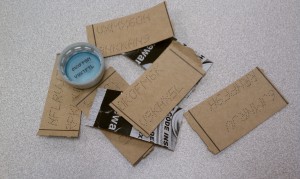How badass is this?
Jes over at The Militant Baker has posted the most gorgeous and smoldering retort to Abercrombie & Fitch CEO Mike Jeffries.
In her letter she challenges A&F’s fat-hating and sexist business practices,
The only thing you’ve done through your comments (about thin being beautiful and only offering XL and XXL in your stores for men) is reinforce the unoriginal concept that fat women are social failures, valueless, and undesirable.
she comments on current marketing perspectives of beauty and attraction,
Never in our culture do we see sexy photo shoots that pair short, fat, unconventional models with not short, not fat, professional models. To put it in your words: “unpopular kids” with “cool kids”. It’s socially acceptable for same to be paired with same, but never are contrasting bodies positively mixed in the world of advertisement.
and then stars in a jaw-dropping, sultry, sexy photo shoot by Liora K Photography, shot in the style of the Abercrombie & Fitch catalog and advertisements. You get one teaser here – for the rest, go visit the Militant Baker.
Jes in an embrace with model John C. Shay, giving the camera a dark glance as Shay lifts her chin towards him. This is one of many shots that shows off Jes’s tattooed, curvalicious bod. All of the displayed set is in black and white. Many of the other photos feature Jes wearing an Abercrombie & Fitch t-shirt.
In the letter she explains her motivations for the project:
I didn’t take these pictures to show that the male model found me attractive, or that the photographer found me photogenic, or to prove that you’re an ostentatious dick. Rather, I was inspired by the opportunity to show that I am secure in my skin and to flaunt this by using the controversial platform that you created. I challenge the separation of attractive and fat, and I assert that they are compatible regardless of what you believe. Not only do I know that I’m sexy, but I also have the confidence to pose nude in ways you don’t dare.
To end the set, Jes gives Jeffries the bird, as so many of us have.
Hat tip to C. Brown on Facebook for the link to the Buzzfeed article about Jes’s blog.







